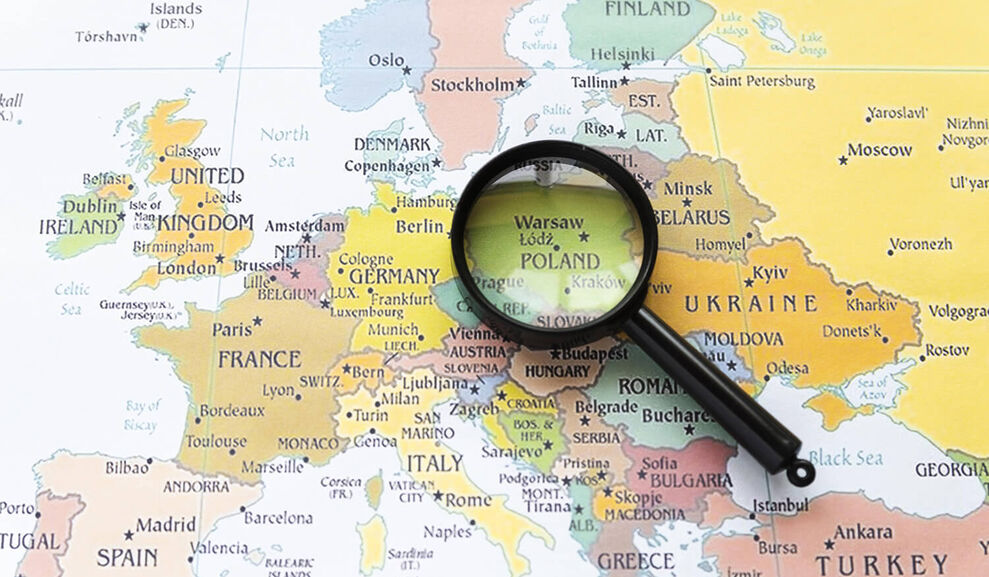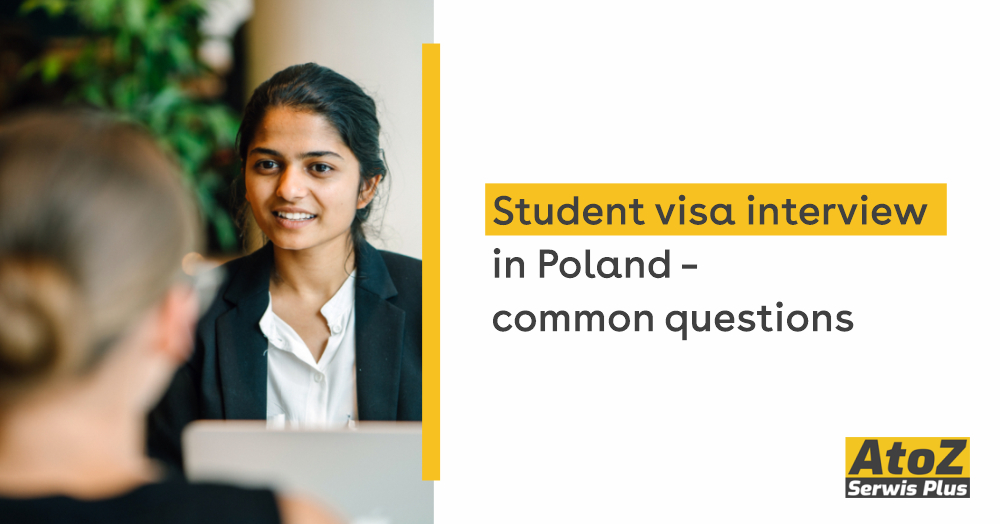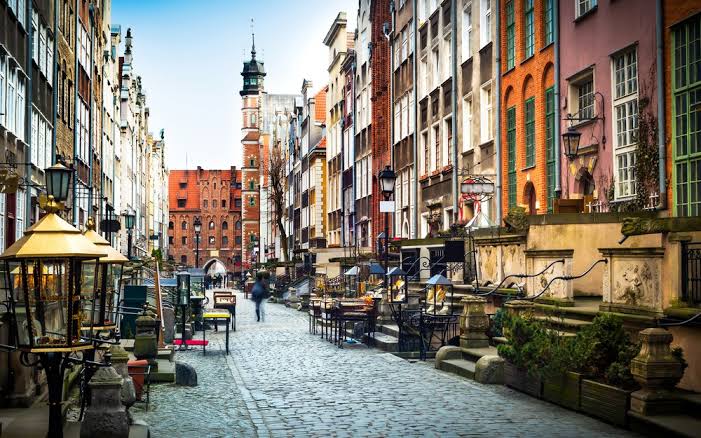

The Best Cities in Poland to Live and Work
Poland has several cities that offer great opportunities to live and work. Here are some of the best cities in Poland to live and work in:
- Warsaw - Poland's capital city is a hub of economic activity and boasts a strong job market, making it an excellent place to live and work. Warsaw is home to many international companies, financial institutions, and start-ups.
- Kraków - With its rich history, cultural diversity, and stunning architecture, Kraków is one of Poland's most popular tourist destinations. The city also has a thriving job market, particularly in the IT and service sectors.
- Gda?sk - Located on the coast of the Baltic Sea, Gda?sk is a major seaport and a popular tourist destination. The city has a strong economy, with a particular focus on the maritime industry, IT, and tourism.
- Wroc?aw - Wroc?aw is a vibrant city known for its beautiful architecture, cultural events, and high standard of living. The city has a diverse economy, with strong industries in manufacturing, services, and IT.
- Pozna? - Pozna? is a historic city with a modern vibe, boasting a strong economy with a focus on the automotive, IT, and food industries. The city also has a great quality of life, with plenty of cultural events and green spaces.
Overall, each of these cities has its own unique character and offers great opportunities to live and work in Poland.
The cost of living in Poland can vary depending on the city and the individual's lifestyle. Generally, the cost of living in Poland is lower than in many other European countries, but it can still be relatively expensive in major cities like Warsaw or Krakow. Here are some estimated monthly costs for some basic expenses in Poland:
- Accommodation: The cost of renting a one-bedroom apartment in a city center can range from around 1,800 z? to 3,500 z? per month, while outside of the city center, it can be between 1,400 z? to 2,800 z?.
- Food: The cost of groceries can vary depending on where you shop, but on average, a single person can spend around 600-800 z? per month on food. Eating out can cost anywhere from 20 z? for a quick meal to 100 z? or more for a nice dinner.
- Transportation: The cost of public transportation is relatively affordable in Poland, with a monthly pass costing around 100 z?. Taxis can be more expensive, with a starting fare of around 6 z? and around 2.5 z? per kilometer.
- Utilities: The cost of utilities like electricity, gas, and water can vary depending on usage, but on average, a single person can expect to pay around 250-350 z? per month.
Overall, the cost of living in Poland is relatively affordable compared to other European countries, making it an attractive destination for those seeking a high quality of life at a reasonable cost.
Here are the top 10 in-demand jobs in Poland for 2023:
- IT Specialist: The demand for skilled IT specialists continues to grow in Poland, especially in areas such as software development, data analysis, cybersecurity, and cloud computing.
- Engineer: There is a high demand for engineers in various fields such as mechanical, electrical, and civil engineering.
- Sales Representative: Sales representatives are in high demand across all industries in Poland, with a particular focus on those with experience in business-to-business (B2B) sales.
- Accountant: Skilled accountants are highly sought after in Poland, especially those with experience in financial analysis, taxation, and auditing.
- Human Resources Manager: Companies in Poland are looking for experienced HR professionals who can help them recruit, train, and manage their workforce.
- Marketing Specialist: The demand for marketing professionals is increasing in Poland, especially in areas such as digital marketing, social media, and content marketing.
- Medical Practitioner: There is a high demand for medical practitioners, especially doctors and nurses, in Poland's healthcare sector.
- Logistics Specialist: The demand for logistics professionals is increasing in Poland due to the country's strategic location and growing exports.
- Language Teacher: There is a high demand for language teachers, especially those who can teach English, German, and Spanish.
- Customer Service Representative: With the growth of the service sector in Poland, the demand for customer service representatives who can handle customer inquiries, complaints, and feedback is also increasing.
These are just some of the most in-demand jobs in Poland, and there are many other professions that are also in high demand, especially those that require advanced technical skills and expertise.
Here are some of the most common blue-collar jobs in Poland:
- Construction Worker - This includes laborers, masons, carpenters, and electricians who work on construction sites.
- Factory Worker - This includes machine operators, assemblers, and packagers who work in factories and manufacturing plants.
- Warehouse Worker - This includes order pickers, packers, and forklift operators who work in warehouses and distribution centers.
- Driver - This includes truck drivers, delivery drivers, and courier drivers who transport goods and materials.
- Cleaner - This includes janitors, custodians, and housekeepers who clean and maintain buildings, offices, and homes.
- Landscaper - This includes gardeners, landscapers, and groundskeepers who maintain parks, gardens, and outdoor spaces.
- Cook or Chef - This includes line cooks, prep cooks, and chefs who work in restaurants, cafes, and hotels.
- Machine Operator - This includes operators of industrial machines such as lathes, milling machines, and CNC machines.
- Welder - This includes welders and metal fabricators who work in factories, construction sites, and repair shops.
- Maintenance Technician - This includes technicians who perform maintenance and repair work on machinery, equipment, and buildings.
These are just a few examples of blue-collar jobs in Poland, and there are many other types of jobs available in various industries.
The quality of life for workers in Poland can vary depending on their occupation, income, and location. Here are some general aspects of workers' lives in Poland:
- Work-Life Balance: Many companies in Poland offer their employees a good work-life balance, with reasonable working hours and vacation time. In addition, Polish law requires employers to provide paid maternity and paternity leave, sick leave, and vacation time.
- Salary: The average salary in Poland is lower than in many other European countries, but it is still possible to have a comfortable life with a decent income. The minimum wage in Poland is set at 2,800 z? per month, and the average salary for workers in Poland is around 5,500 z? per month.
- Job Security: Poland has a relatively low unemployment rate compared to other European countries, and workers generally enjoy job security. However, workers in some industries, such as construction and agriculture, may face seasonal employment and job insecurity.
- Healthcare: The Polish healthcare system provides free or low-cost medical services to its citizens, including workers. However, some workers may choose to purchase private health insurance to access better quality care.
- Cost of Living: The cost of living in Poland is generally lower than in many other European countries, making it possible for workers to have a good standard of living with a moderate income.
- Work Culture: The work culture in Poland is generally professional and respectful, with a focus on collaboration and teamwork. However, workers may experience some cultural differences depending on their workplace and industry.
Overall, workers in Poland can enjoy a good quality of life with reasonable working hours, job security, and access to healthcare, while still being able to maintain a comfortable lifestyle.
Student life in Poland can be exciting and fulfilling, as the country offers a rich cultural and educational experience for international students. Here are some aspects of student life in Poland:
- Education: Poland has a long tradition of high-quality education, and its universities offer a wide range of programs in various fields, including science, technology, engineering, medicine, humanities, and social sciences. Many Polish universities have partnerships with international institutions, and the country is a popular destination for international students.
- Cost of Living: The cost of living in Poland is relatively low compared to many other European countries, making it an attractive destination for students. The cost of accommodation, food, and transportation is generally affordable, and there are many opportunities for part-time work to supplement income.
- Culture: Poland has a rich cultural heritage, with a long history of art, music, literature, and theater. Many Polish cities offer a vibrant cultural scene, with museums, galleries, theaters, and festivals throughout the year. Students can immerse themselves in Polish culture and learn about the country's history and traditions.
- Student Organizations: Polish universities have active student organizations and clubs, where students can meet people with similar interests, engage in social activities, and get involved in community service. These organizations offer opportunities for personal growth and development, and can help students build a network of contacts.
- Sports and Recreation: Polish universities offer a variety of sports and recreational activities for students, including team sports, fitness classes, and outdoor activities. Many universities have modern sports facilities, and some even have their own swimming pools, gyms, and climbing walls.
Overall, student life in Poland can be a rewarding and fulfilling experience, with quality education, affordable cost of living, vibrant cultural scene, and diverse social opportunities.
There are various job opportunities available for international students in Poland. Here are some of the most popular options:
- Part-time jobs: Many international students work part-time while studying in Poland. Part-time jobs can be found in the service industry, such as restaurants, cafes, and shops. The wages for part-time jobs in Poland are typically between 10-20 PLN per hour.
- Internships: Many companies in Poland offer internships to international students, providing them with valuable work experience and an opportunity to develop skills in their field of study. Internships are available in various fields, such as marketing, IT, engineering, and finance.
- Language teaching: International students who are proficient in a foreign language, especially English, may find job opportunities as language teachers or tutors. Many language schools and private language tutors are in demand in Poland.
- Freelancing: International students who have skills in graphic design, web development, or content writing may consider freelancing as a career option. Platforms such as Upwork, Fiverr, and Freelancer are popular options for freelancers in Poland.
- Volunteering: Volunteering is an excellent way to gain work experience and develop skills while contributing to society. Many non-profit organizations in Poland offer volunteer opportunities to international students.
It is important to note that international students are allowed to work in Poland without a work permit for up to 20 hours per week during the academic year and full-time during holidays. However, it is advisable to check with the university's international student office or the Polish embassy for the latest regulations and requirements for international students to work in Poland.
There are several types of visas that one can apply for to enter Poland, depending on the purpose of their visit. Here are some of the most common visa types in Poland:
- Schengen visa: This visa allows visitors to travel within the Schengen area, which includes most European countries. It is typically issued for up to 90 days and is suitable for short-term visits, such as tourism, business, or family visits.
- National visa: This visa is for individuals who wish to stay in Poland for more than 90 days, such as for work, study, or long-term stays. A national visa can be issued for a period of up to one year.
- Student visa: This visa is for individuals who wish to study in Poland. It allows students to stay in the country for the duration of their studies and is usually issued for up to one year.
- Work visa: This visa is for individuals who have been offered a job in Poland. It allows them to work and live in the country for the duration of their employment contract.
- Business visa: This visa is for individuals who wish to conduct business in Poland. It allows them to attend meetings, conferences, or negotiations related to their business activities.
It is important to note that the visa application process and requirements may vary depending on the type of visa and the applicant's nationality. It is advisable to check with the Polish embassy or consulate in your home country for the latest information and requirements regarding visa applications.
Transportation costs in Poland vary depending on the mode of transportation and the distance traveled. Here are some approximate costs:
- Public transportation: The cost of a single ticket for public transportation in Poland varies by city. In Warsaw, for example, a single-ride ticket costs 4.40 PLN, while in Krakow, it costs 3.80 PLN. Most cities offer discounted tickets for students, seniors, and children. Monthly passes are also available, which can provide significant savings for regular commuters.
- Taxis: Taxis are available in most cities in Poland, and the fares are regulated by the local government. The cost of a taxi ride is typically calculated based on distance traveled, with a starting fare of around 6-10 PLN, and an additional charge per kilometer. It is advisable to use a reputable taxi company and check the fare before starting the ride.
- Car rental: Renting a car in Poland can be relatively inexpensive, with rates starting at around 80 PLN per day for a basic model. However, additional charges may apply for insurance, fuel, and tolls.
- Trains: Train travel in Poland is generally affordable, with fares starting at around 10-15 PLN for short distances. Longer journeys and higher-class seats may cost more. It is advisable to book train tickets in advance to get the best prices.
- Flights: Domestic flights in Poland can be relatively inexpensive, with fares starting at around 100-200 PLN. However, additional charges may apply for baggage and other services.
Overall, transportation costs in Poland are relatively affordable compared to many other European countries. Public transportation is usually the most cost-effective option, while taxis and car rentals can be more expensive.
Polish passport holders can travel to a large number of countries without requiring a visa in advance. As of 2023, Polish citizens can travel to 187 countries and territories without a visa or with a visa on arrival. This makes the Polish passport one of the most powerful in the world in terms of visa-free travel.
Here are some examples of popular destinations that Polish passport holders can travel to without a visa or with a visa on arrival:
- Europe: Polish citizens can travel freely within the European Union and the Schengen area, which includes most of Europe.
- North America: Polish passport holders can travel visa-free to the United States, Canada, and several Caribbean countries.
- South America: Several South American countries, including Argentina, Brazil, Chile, and Peru, allow Polish passport holders to travel visa-free.
- Asia: Popular destinations for Polish travelers in Asia, such as Japan, South Korea, and Singapore, allow visa-free travel for Polish citizens.
- Oceania: Polish passport holders can travel visa-free to Australia and New Zealand.
It is important to note that visa-free travel may be subject to certain conditions and restrictions, such as a maximum length of stay or the need for a return ticket. It is advisable to check with the relevant embassy or consulate for the latest information and requirements before traveling.
Polish cuisine is a hearty and flavorful blend of Central European and Eastern European influences, with a focus on meat, potatoes, and traditional herbs and spices. Here are some popular Polish dishes and food items:
- Pierogi: Pierogi are a type of dumpling filled with potatoes, cheese, meat, sauerkraut, or other fillings. They are often boiled or fried and served with sour cream.
- Bigos: Bigos is a stew made with sauerkraut, meat, and spices, often served with potatoes or bread.
- Kielbasa: Kielbasa is a type of sausage made from pork, beef, or a mixture of the two, flavored with garlic and other spices.
- Golabki: Golabki are cabbage rolls filled with ground meat, rice, and spices.
- Zurek: Zurek is a traditional Polish soup made with sourdough rye flour, potatoes, and sausage, often served in a bread bowl.
- Kotlet schabowy: Kotlet schabowy is a breaded pork cutlet, similar to a Wiener Schnitzel.
- Barszcz: Barszcz is a bright red beet soup, often served with sour cream and boiled potatoes.
- Sernik: Sernik is a type of cheesecake made with cream cheese or quark cheese, often flavored with vanilla or lemon.
In addition to these traditional dishes, Polish cuisine also features a wide range of pastries, breads, and sweets, such as poppy seed rolls, apple cakes, and gingerbread. Polish cuisine is known for being filling and flavorful, with a focus on fresh, locally sourced ingredients.
Poland has a rich cultural heritage and has produced many talented actors over the years. Here are some of the most famous actors from Poland:
- Daniel Olbrychski: Daniel Olbrychski is one of the most famous Polish actors of all time. He has appeared in more than 100 films, including the Oscar-nominated film "The Promised Land" and the cult classic "The Tin Drum".
- Pawel Pawlikowski: Pawel Pawlikowski is a Polish filmmaker and screenwriter who has won numerous awards for his work, including the Academy Award for Best Foreign Language Film for his movie "Ida".
- Jerzy Stuhr: Jerzy Stuhr is a popular actor, director, and screenwriter who has appeared in many Polish films and television shows. He is known for his work with the renowned Polish director Krzysztof Kieslowski.
- Andrzej Seweryn: Andrzej Seweryn is a Polish actor and director who has worked extensively in both Poland and France. He has won numerous awards for his performances, including the César Award for Best Actor for his role in the movie "Molière".
- Krystyna Janda: Krystyna Janda is a prominent Polish actress who has won numerous awards for her work, including the Best Actress award at the Cannes Film Festival for her role in the movie "Interrogation".
- Boguslaw Linda: Boguslaw Linda is a popular Polish actor who has appeared in many films and television shows. He is best known for his roles in movies such as "Blind Chance" and "Pan Tadeusz".
These are just a few of the many talented actors who have contributed to Poland's vibrant cultural scene.
Poland is a country with a rich and diverse history. Here are some facts about the history of Poland:
- Poland was founded in 966 AD when Mieszko I, the first ruler of the Piast dynasty, converted to Christianity and united the tribes of the region.
- The Polish-Lithuanian Commonwealth was established in 1569 and lasted until the late 18th century. It was one of the largest and most powerful states in Europe at the time, and played a major role in the politics and culture of the region.
- Poland was partitioned three times between 1772 and 1795, with its territory being divided among Russia, Prussia, and Austria. The partitions were a major event in Polish history, and led to a period of political and cultural repression.
- Poland regained its independence in 1918, following World War I. It became a democratic republic with a constitution, a parliament, and free elections.
- During World War II, Poland was invaded by Germany and the Soviet Union. The country suffered enormous losses, with millions of people killed or displaced. The Warsaw Uprising in 1944 was one of the most significant resistance movements of the war.
- After the war, Poland became a socialist state under Soviet influence. The government nationalized many industries and collectivized agriculture, leading to economic growth but also political repression.
- In 1989, Poland became a democratic republic again, following the collapse of communism in Europe. It has since become a member of the European Union and NATO, and has made significant progress in building a market economy and strengthening democratic institutions.
These are just a few of the many important events and developments in the history of Poland.
Poland is a country with many unique and beautiful places to visit. Here are some of the best unique places in Poland:
- Wieliczka Salt Mine: Located near Krakow, this UNESCO World Heritage site is a stunning underground mine that has been in operation since the 13th century. Visitors can take a tour of the mine and see its many chambers, underground lakes, and sculptures made of salt.
- Bialowieza Forest: This ancient forest is one of the last remaining primeval forests in Europe, and is home to the European bison, the largest land mammal in Europe. Visitors can take a guided tour of the forest and see its diverse wildlife and unique ecosystems.
- Gdansk Old Town: This historic town on the Baltic coast is famous for its beautiful architecture, including the colorful facades of its merchant houses and the towering Gothic brick church of St. Mary's.
- Zakopane: Located in the Tatra Mountains, this resort town is a popular destination for skiers and hikers. Its traditional wooden architecture and stunning mountain views make it a unique and picturesque place to visit.
- Malbork Castle: This medieval castle is one of the largest in the world, and is a UNESCO World Heritage site. It was built by the Teutonic Knights in the 13th century, and visitors can explore its many towers, courtyards, and halls.
- Slowinski National Park: This park on the Baltic coast is famous for its shifting sand dunes, which move and change shape with the wind. Visitors can hike or bike through the park and see its unique landscapes and wildlife.
These are just a few of the many unique and beautiful places to visit in Poland.





